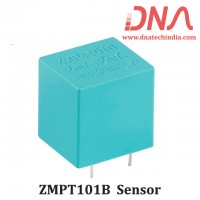Password Access System |
Aim |
|
An Electronic lock is a locking device which operates by means of electric current. We can use Electronic lock for activating/deactivating Eletric lock. Electric locks use magnets, solenoids, or motors to actuate the lock by either supplying or removing power. More often electric locks are connected to an access control system. We can also use it to lock Electronic Devices by directly turning ON/OFF the power of the device. The main advantage of electronic lock over the Hardware lock is the ability to change the password without any change in the hardware. |
|
A keypad is used to enter the password which is then compared by the microcontroller with the one saved in the EEPROM. If the password matches the relay is activated which can thus be used to activate the Eletric Lock. Facility to change the password is also provided the password can be anywhere from one digit to six digit. The password can only be changed after entering the current password. |
Block Diagram: |
|
|
Microcontroller- |
|
It is the Heart of the circuit. We will be using ATMEL’s AT89S51 microcontroller. It is a 40 pin microcontroller with 128 bytes RAM & 4kb flash memory. The controller detects any switch press & accordingly performs the necessary action. Turns ON the relay when entered password is correct & turns OFF the relay when the ‘LOCK’ switch is pressed. It displays information on the LCD thus enabling user to enter or edit the password. The controller saves & reads the password from the EEPROM. |
EEPROM- |
|
EEPROM is used as external memory device to store password in case of power failure. The EEPROM does not require any external battery backup for storage. We are using 24C08 EEPROM which has 8k bits memory which is more than enough for saving the password. The EEPROM communicates with the Microcontroller using the I2C protocol. |
Keypad- |
|
In all 12 Tactile switches are used in the keypad section. These are 0-9, one Unlock switch & One Lock switch. They are used to Lock, Unlock and change the password. |
LCD- |
|
The 16 X 2 LCD Display provides a user interface. A liquid crystal display (commonly abbreviated LCD) is a thin, flat display device made up of any number of color or monochrome pixels arrayed in front of a light source or reflector. It is prized by engineers because it uses very small amounts of electric power, and is therefore suitable for use in battery-powered electronic devices. |
|
A very popular standard exists which allows us to communicate with the vast majority of LCDs regardless of their manufacturer. The standard is referred to as HD44780U, which refers to the controller chip which receives data from an external source (in this case, the 8051) and communicates directly with the LCD. |
Relay- |
|
Relays are components which are basically used to turn ON/OFF high current or Voltages devices. A relay is TURNED ON when a sufficient holding current is passed through its coil. We are using 12v SPDT relay i.e. the voltage required to energize the coil is 12v and of Single Pole Double Throw (SPDT) type i.e. it consists of one common Pole & two outputs namely the Normally Open (NO) & Normally Closed (NC) outputs. |
Relay Driver- |
|
The Relays require suitable ‘PULL IN’ current or ‘HOLDING’ current (around 70ma) to turn it ON. Moreover the Relay coil voltage (12volts) is more that what the controller can handle. So to provide the necessary current & at the required voltage a relay driver circuit is required. |
Power Supply- |
|
We require regulated 5 volts for microcontroller, LCD, EEPROM & approximately 12 volts for the Relay. These voltages are generated from 230v line voltage. |
Hardware Requirement: |
|
Software Requirement: |
|
Advantages: |
|
Disadvantages: |
|
Future Scope: |
|
APPLICATION: |
|
Text Books: |
|
Website: |
Magazines: |
|




